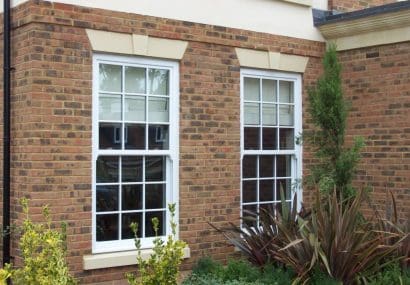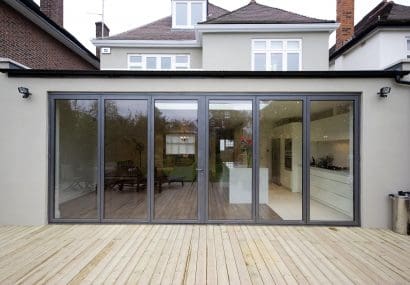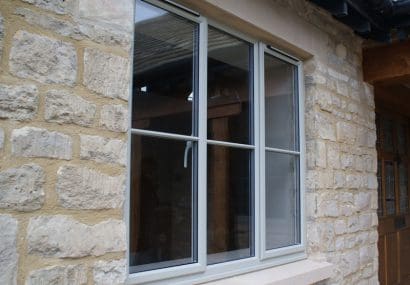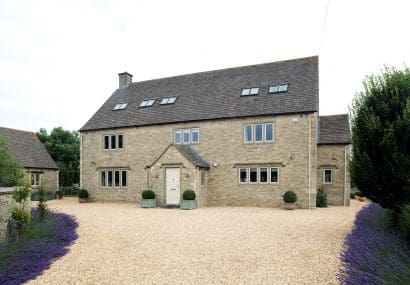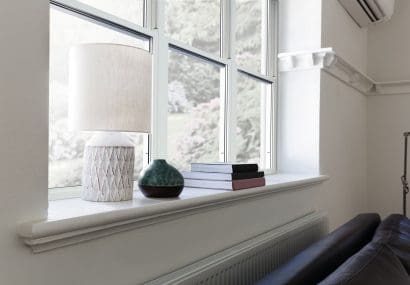Modern Elegance: How Commercial Glazing Suppliers are Influencing Contemporary Architecture
Posted: 6th December 2023
Supply and demand seems like a fairly straightforward principle: a business will aim to provide their customers with the goods and services they need.
Occasionally, however, people might not know that they want something until they see it or know that it’s a possibility. Most of us have experienced this in one way or another. Those who ply their trade in the catering industry will look to the innovators to get ideas and inspiration in much the same way that retailers will study market analytics for a head-start on their competitors. As consumers, we will often research alternatives before making any kind of investment, be it reading reviews or comparing the products’ specifications. From a commercial point of view, the ability to read the market and see the blind-spots – where supply doesn’t meet or hasn’t realized a particular demand – is priceless and equally rare. There are no shortcuts. In order to gain an appreciation for what might be the next big trend, there must first be an intimate and detailed knowledge of the relevant industry. In the modern built environment, where innovative glazing solutions are becoming more and more prominent in architectural design, it makes sense that glazing suppliers would be filling this role of industry trend-setters. From aesthetics and principles of manufacturing to the materials used and the products leading the way in their exemplification of contemporary design, let’s take a look at how glazing suppliers have become so pivotal in our collective perception of modern architecture.
Principles
One fairly important point about glazing is that it is just about always visible; nearly every building will have at least one window in view of those passing by. From a supplier’s perspective, this means that the quality of your products has nowhere to hide – a nightmare for those who might cut corners but a blessing for those of us who take pride in our work. Being so uniformly visible also makes glazing an industry that is obsessed with creating products which look as great as they perform and stand as a representation of current tastes and sensibilities. In today’s climate, modern glazing solutions have been designed and refined around this basic premise of doing more with less – and it is an ethos that has grown to incorporate aesthetics as much as function.
Zero Waste
All industrial processes create by-products. While it may be impossible to completely rid the architectural trade of waste, there are parts of it that are well along the path of minimizing it. One of the leaders in this regard is glazing. Due to the precision of the manufacturing process and the versatility of the materials used, the component parts of windows can be made to exact measurements, hugely reducing the waste that might build up over the course of a project. This reduction is just as important in the production of the items in the factory as it is in the lessening of the burden on landfill sites at the other of end a project. Another consideration in the conversation of a thing’s wastefulness is its life after its initial use. In the case of the glazing industry, materials like glass and aluminium are famous for the fact that they can be so easily recycled – a real plus in the ecology debate that is being replicated across the building trade as well as further afield.
Efficiency
Every stage of the glazing industry – from the factory to the fitting – is being continuously tweaked and improved upon. Arguably, no trade has been subject to more rigorous ecological targets, but it doesn’t miss a beat. This principle of maximizing the usefulness of our resources is fundamental to the evolution of glazing solutions, reversing the notion of diminishing returns into a model where things are more useful tomorrow than they are today.
Minimal design/ sleek aesthetic
One of the immediately noticeable things about our current sense of style is the push towards minimalism. While this can be attributed to the previous points of ecology, there’s an undeniable aesthetic appeal to it too. There is something particularly elegant about modesty and quiet confidence, a sensibility that exudes from contemporary glazing designs and one which is just as prevalent in the most high-spec commercial buildings as it is in residential properties.
Materials
If we were to take a look around at some of the most iconic buildings of today, the use of materials like aluminium and glass would be one of the first things that would spring to mind that connects them. Equally, if we were to think of the words modern elegance, it wouldn’t be long for these to be part of the conversation. This pairing has been synonymous with our image of modernity for quite some time now. Some of their key attributes – transparency, strength, flexibility, versatility, efficiency – are so closely linked to the world we now find ourselves in that it’s no wonder they have become almost ubiquitous with contemporary design and emblematic of our pursuit of sustainability.
Choice and customisation
Mass production has historically meant making a range of items over and over again in the hope that the limited choice could be made to suit the vast majority of people’s plans and tastes. An obvious shortcoming of this way of thinking is the expectation that customers would build their designs around the measurements of the products they had chosen. Some industries have begun to realize that this arrangement should be the other way around. Given that industrial processes have become so precise, shouldn’t this precision be passed on to customers? Quality glazing suppliers have done just this. It is one area of architectural design that really got behind the bespoke revolution – and glazing can be made to all sorts of shapes and sizes according to the preferences of the customer, in full confidence that there will be no drop-off in quality or satisfaction. At Mercury, we have taken this yearning for choice to heart. That’s why we offer the range of options we do, with decades of experience and expertise to back it up!
Products
Thanks in large part to the scientific and technical advancements of recent years, you don’t need to look at just the traditional points of glazing to see the innovations on display. Glass can be used in ways that just a few short years ago would have been unthinkable. It says a lot about people’s attitudes towards glass as a material that improvements and new products are immediately met by a high demand – it’s almost as though there was a glazing-shaped hole waiting to be filled. Here’s just a couple of examples of these advancements in action…
Verandas and sun rooms
Having a space which acts as a bridge between the indoor and outdoor parts of our homes has been popular for years, but the ability to build a sun room or veranda with such strong emphasis on glass is a fairly recent development and has been a real game-changer. Gone are the days when thick and obstructive frames were needed to support such a structure; the products today allow designers to wring every last drop of the available sunshine, even in the chillier winter months. With modern glazing’s thermal and acoustic credentials, these spaces can be designed to make the most of the good weather whilst mitigating a lot of the negative effects of the bad weather, all while maintaining the seclusion and privacy of our lived spaces.
Structural Glazing
Standard glazing has always been separate from the materials we use to ensure the integrity of the structure of a building. With structural glazing, however, large panes of glass are used instead of brickwork or an equivalent, to form the external shell of a property. There is a definite dignified elegance in the use of continuity as a design feature. From the outside, the harmony of a single predominant material is aesthetically pleasing
Back to news
